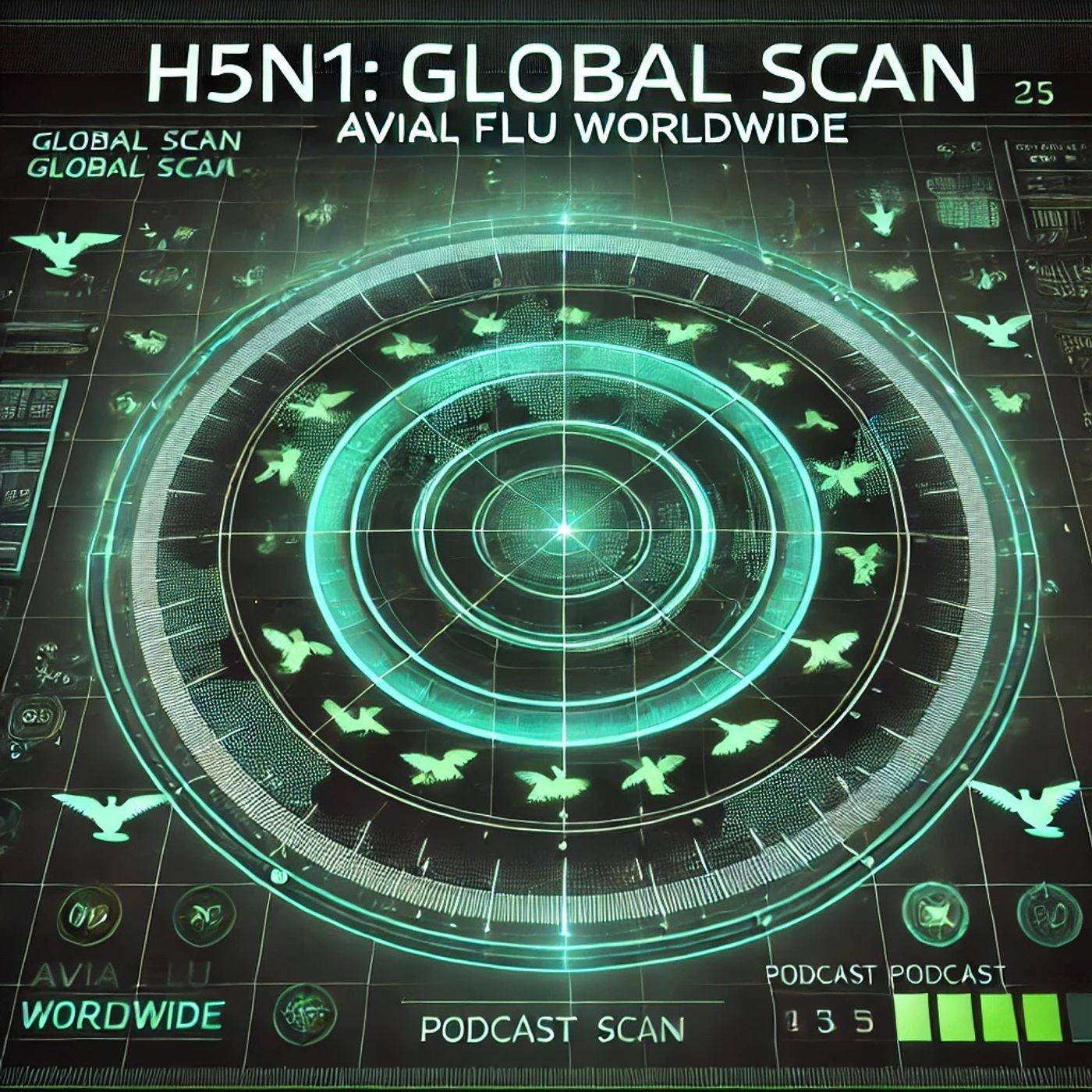Podcast Episode Details
Back to Podcast Episodes
H5N1 Avian Flu Spreads Globally: Impacts on Poultry, Mammals, and Human Health in 2025 Revealed
Welcome to H5N1 Global Scan: Avian Flu Worldwide. I’m your host, and today we examine the continuing global impact of highly pathogenic avian influenza H5N1 as of September 2025.
Let’s begin with a continental breakdown. Since 2020, H5N1 outbreaks have affected every continent except Australia. Europe saw large-scale poultry losses and persistent wild bird deaths, most notably in the UK and France. In Asia, outbreaks struck China’s waterfowl in Qinghai province and human fatalities occurred in Cambodia, India, and Vietnam, largely linked to direct contact with poultry. Africa has reported recurring outbreaks across its western and northern regions, though human cases remain rare. In the Americas—North, Central, and South—19 countries and territories experienced over 4,700 animal outbreaks since 2022, including recent spread to dairy cattle in the United States, where 976 herds have been impacted so far in 2025. South America reported cases in Argentina, Peru, and Chile, and Mexico confirmed its first fatal pediatric case this spring. According to the Pan American Health Organization, the infection has crossed into mammals in several regions, raising further public health concern.
Globally, since 2003, there have been nearly 1,000 confirmed human cases reported to the World Health Organization, with a high 48% case fatality rate. In recent years, genetic data has revealed rapid viral reassortment, particularly in Southeast Asia. The Food and Agriculture Organization reported that Cambodian and Vietnamese lineages have acquired genes from global H5N1 strains, complicating diagnosis and control.
Major research is underway. Johns Hopkins University notes that international teams are studying cross-species transmission, especially the virus’s ability to spill over into mammals like dairy cattle, sheep, and marine mammals. Surveillance data from the CDC and WHO now includes routine H5N1 updates, mapping monthly trends and mutations in real time.
WHO and FAO emphasize the need for coordinated surveillance and transparent reporting. The WHO Western Pacific office has urged member states to strengthen laboratory capacity, standardize molecular typing, and improve vaccination strategies for both animals and humans. The FAO, meanwhile, continues to coordinate cross-border containment projects, particularly in the Mekong Subregion and trans-European waterfowl flyways.
Cross-border issues are significant, especially for international trade. The Philippines enacted export bans on poultry products from multiple countries, while Europe’s egg shortages and North American poultry culls have disrupted food markets. The US egg supply recently saw price surges after 20 million chickens were culled at the end of 2024.
Vaccine development is advancing, but challenges remain. Current vaccines for poultry have reduced spread in China and Vietnam. Experimental vaccines for cattle are under review, and a handful of companies in the US and Europe are testing new human H5N1 vaccine candidates with support from the WHO and CEPI.
National approaches to containment vary. China is deploying mass vaccination in poultry, the US is prioritizing rapid culling and real-time testing, while European countries combine flock surveillance with public health messaging. Southeast Asia is focused on integrating poultry and human health programs to manage outbreaks quickly.
To sum up, H5N1 remains a global challenge requiring coordinated science, policy, and rapid international response. That’s it for H5N1 Global Scan: Avian Flu Worldwide. Thank you for tuning in—come back next week for more. This has been a Quiet Please production, and for me check out Quiet Please Dot A I.
For more http://www.quietplease.ai
Get the best deals https://amzn.to/3ODvOta
Published on 1 week, 2 days ago